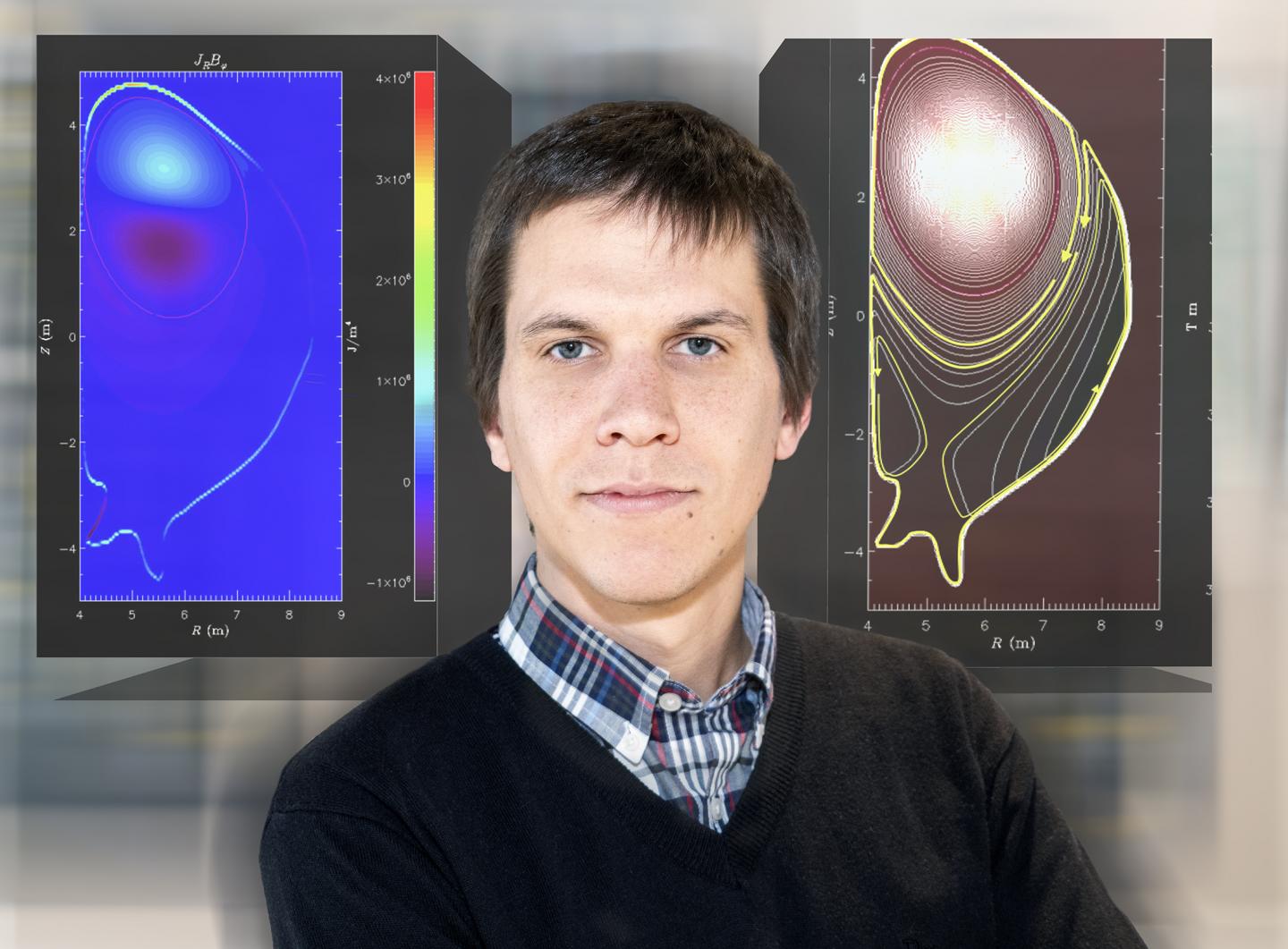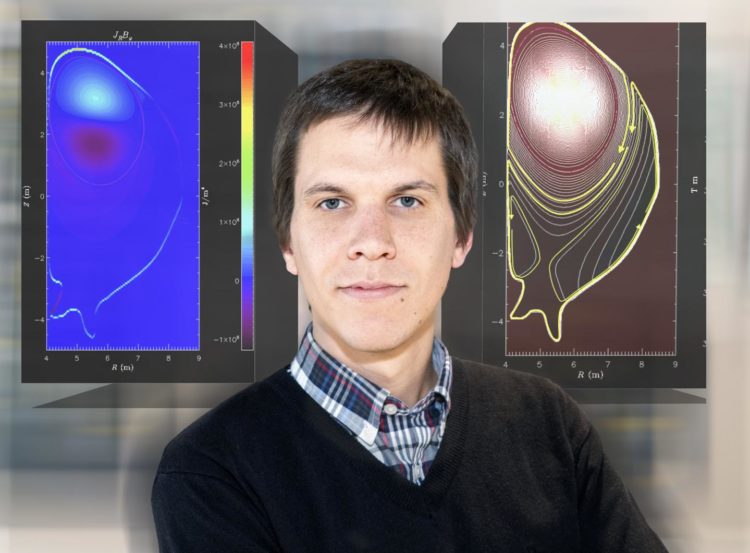
Credit: Photo collage by Elle Starkman
Doughnut-shaped tokamaks — facilities designed to reproduce the fusion energy that powers the sun and stars on Earth — must withstand forces that can be stronger than hurricanes created by disruptions in the plasma that fuels fusion reactions. Recent findings by physicists at the U.S. Department of Energy’s (DOE) Princeton Plasma Physics Laboratory (PPPL) show that certain forces released by disruptions act in a surprising manner. The results could enable designers of large future facilities such as ITER, the international tokamak under construction in France, to better contain forces that could seriously damage the facility.
Two forces
Causing these forces produced by disruptions called “vertical displacement events” (VDEs) are “eddy” currents that swirl within a tokamak’s inner walls and “halo” currents that enter and exit the walls. Yet no matter how strong the halo currents grow, the total forces slamming into the walls do not become more powerful. Results of state-of-the-art PPPL simulations, using PPPL’s flagship M3D-C1 code, show that any increase in the halo current is unexpectedly offset by a reduction in the eddy current — just as losses offset gains in a bank account as if it were a zero-sum game.
“What we found was that changing the halo current doesn’t affect the total vertical force,” said Cesar Clauser, a PPPL post-graduate fellow who led the research reported in Nuclear Fusion. “This was a surprising and interesting result.”
Fusion combines light elements in the form of plasma, the hot, charged state of matter composed of free electrons and atomic nuclei. Physicists seek to capture and control fusion on Earth to produce a safe, clean and virtually limitless source of power for generating electricity.
PPPL researchers aimed to compare their sophisticated model with findings of the simplified models that ITER uses to calculate disruptive forces. “One implication to draw from our study is that measuring the halo current could be a proxy for the total forces,” said PPPL physicist Nate Ferraro, a coauthor of the paper with PPPL physicist Stephen Jardin. “This could lead to a more complete understanding.”
Advanced PPPL code
The advanced PPPL code M3D-C1 revealed the close relationship between the eddy and halo current forces in ITER plasmas and showed that changing the halo current did not affect the total vertical forces. “The simulations covered a wide range of halo current cases since we wanted to look for the worst-case scenario,” Clauser said.
The two-dimensional simulations analyzed the total force produced by the two currents but not the distribution of forces within ITER walls. Future three-dimensional studies will model the distribution to seek out paths for halo currents that eddy currents might not offset.
###
Support for this work comes from the DOE Office of Science and the Scientific Discovery through Advance Computing (SciDAC) Center for Tokamak Transient Simulation (CTTS).
PPPL, on Princeton University’s Forrestal Campus in Plainsboro, N.J., is devoted to creating new knowledge about the physics of plasmas — ultra-hot, charged gases — and to developing practical solutions for the creation of fusion energy. The Laboratory is managed by the University for the U.S. Department of Energy’s Office of Science, which is the single largest supporter of basic research in the physical sciences in the United States and is working to address some of the most pressing challenges of our time. For more information, visit energy.gov/science.
Media Contact
John Greenwald
[email protected]
609-243-2672
Original Source
https:/
Related Journal Article
http://dx.





